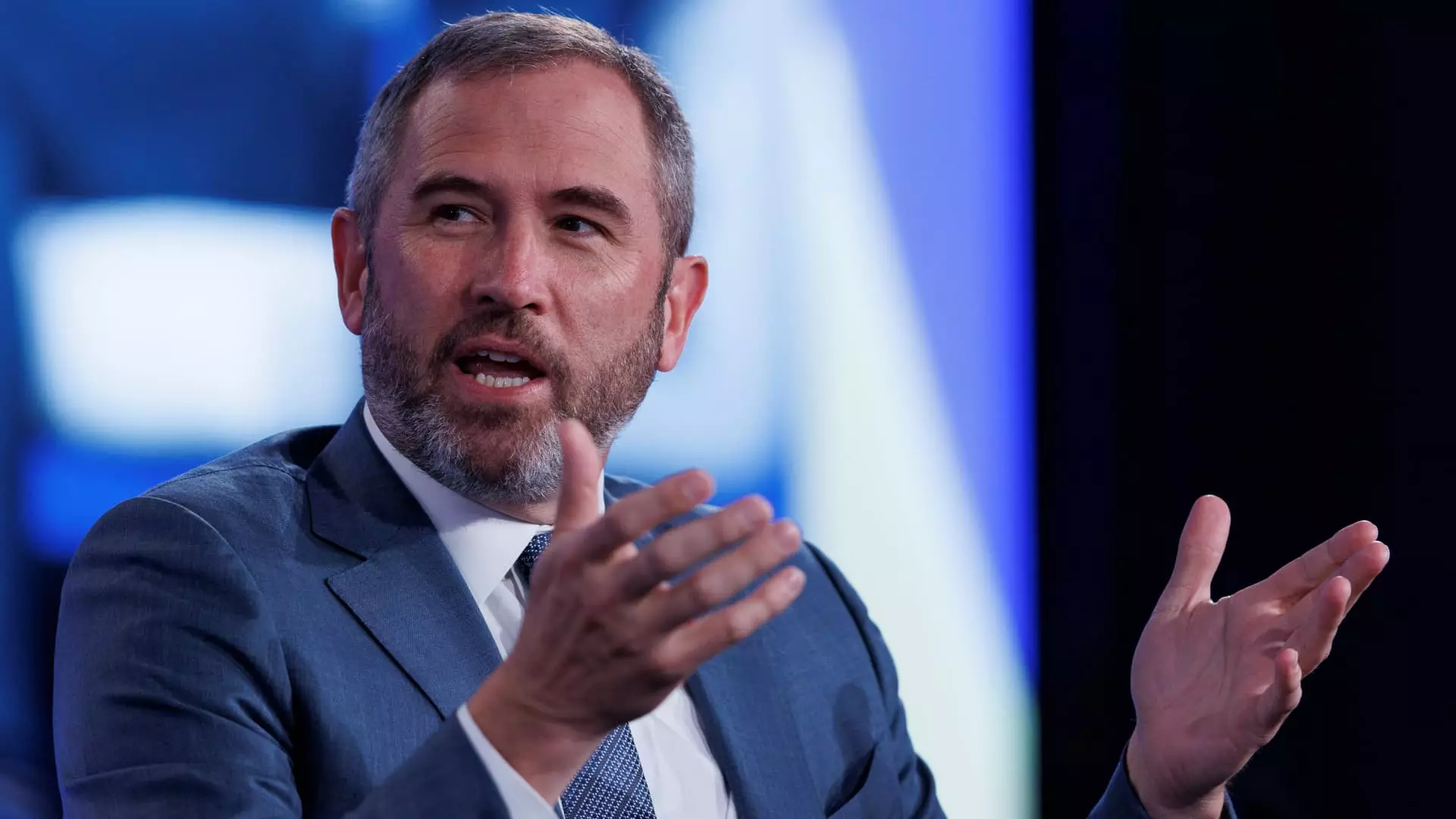In the fast-evolving landscape of cryptocurrency, regulatory dynamics pose significant challenges and opportunities. Ripple Labs’ CEO, Brad Garlinghouse, recently shared his insights on the current regulatory atmosphere in the United States, particularly in light of the upcoming elections. While Garlinghouse has expressed skepticism about the government’s approach to digital currencies thus far, he remains hopeful that the post-election climate will favor innovation within the crypto sector. He confidently stated, “No matter what happens, we’re going to have a more pro-crypto, more pro-innovation Congress than we’ve ever had.” This sentiment reflects broader expectations within the tech community for a shift in attitudes toward cryptocurrency, especially given the increasing dependence of global commerce on blockchain technology.
Ripple is well-known for its pioneering role in the crypto industry, particularly through its partnership with the XRP token, which facilitates seamless international transactions. The company primarily operates outside of the United States, with about 95% of its business conducted overseas. This geographic distribution is not merely a strategic choice but a direct response to the contentious regulatory environment in the U.S. The legal battles faced by Ripple, especially the significant lawsuit filed by the U.S. Securities and Exchange Commission (SEC) in 2020, have prompted the company to seek more favorable operational settings internationally. Last year, Ripple achieved a notable victory when a court ruled that XRP is not classified as a security when sold on public exchanges, signaling a potential shift in regulatory clarity for the broader industry.
Garlinghouse emphasizes the importance of startups considering their incorporation strategies in light of these challenges: “Incorporate outside the United States.” This advice underscores the need for agility and foresight in the rapidly changing regulatory landscape, as companies strive to avoid the pitfalls associated with domestic legislation that may stifle growth.
Political Donations and Industry Sentiment
As the election approaches, Garlinghouse and Ripple have been proactive in their political engagements, donating significant sums to the Fairshake pro-crypto political action committee and supporting candidates who advocate for pro-crypto policies. Notably, Ripple’s co-founder Chris Larsen contributed $11 million to the campaign of Vice President Kamala Harris. This strategic financial support reflects an ongoing effort to influence political outcomes favorably, signaling the industry’s desire to foster a more conducive regulatory environment.
Garlinghouse made a point to highlight the contrasting approaches of political figures regarding cryptocurrency. He noted that while former President Donald Trump has openly embraced crypto, calling himself the “crypto president,” the Harris camp’s stance is more nuanced and complex. Nevertheless, Garlinghouse is optimistic about the potential for a “reset” in crypto policy, irrespective of who wins the election. He believes that this has become a crucial moment for the industry, emphasizing that historical mistakes will lead to more informed and progressive governance in the future.
Interestingly, the cryptocurrency industry is witnessing an increasing degree of partisanship, which contrasts sharply with earlier bipartisan support for crypto issues in Congress. Garlinghouse cautioned against the perceived continuation of negative regulatory patterns if the Harris campaign prevails. The underlying fear is that, under the current administration, regulatory bodies have adopted a more hostile posture towards crypto, with agencies like the SEC and the Office of the Comptroller of the Currency leading the charge against digital currencies. Garlinghouse’s assertion that the current administration’s approach constitutes an “attack” on crypto resonates with many in the industry who claim that this has hindered growth and innovation.
The term “Operation Chokepoint 2.0” has surfaced as a descriptor for the increasing reluctance of banks to collaborate with crypto enterprises—a situation many have likened to a similar initiative during the Obama administration aimed at limiting access to banking services for certain legitimate businesses. This comparison signifies serious concerns regarding the regulatory environment’s impact on the industry’s future.
Looking Ahead: Hope for the Future
Despite the challenges posed by the current regulatory landscape, Garlinghouse asserts a unified belief within the crypto community: the industry will eventually emerge stronger. His optimism underscores a collective aspiration for progress and a renewed emphasis on innovation. As the crypto narrative evolves, players like Ripple continue to advocate for an environment that encourages growth rather than constriction. Looking towards the future, Garlinghouse maintains that the U.S. will come to realize its current regulatory framework has been inadequate, ultimately paving the way for more sustainable and forward-progressive policies that foster technological advancements in the cryptocurrency space.

